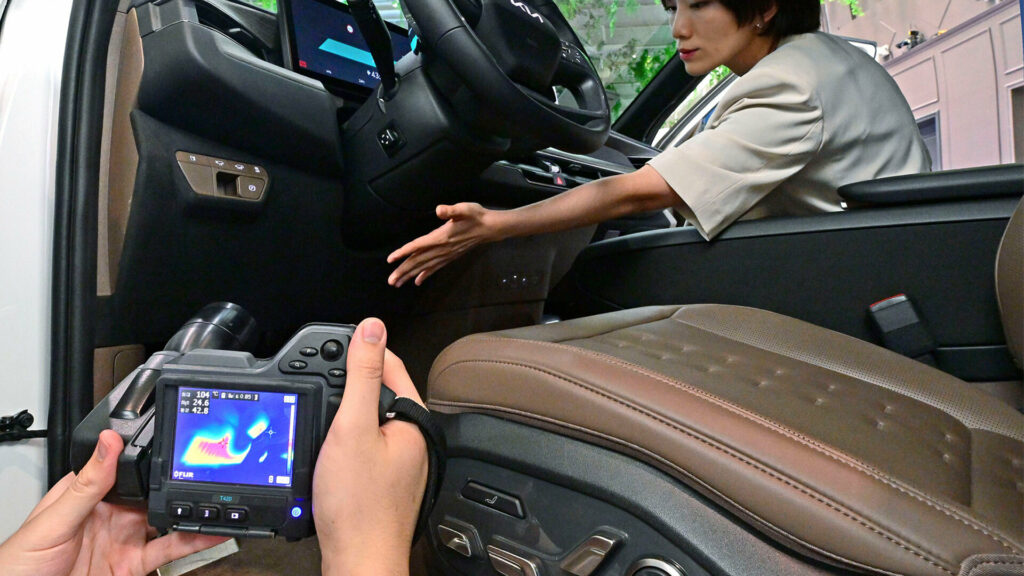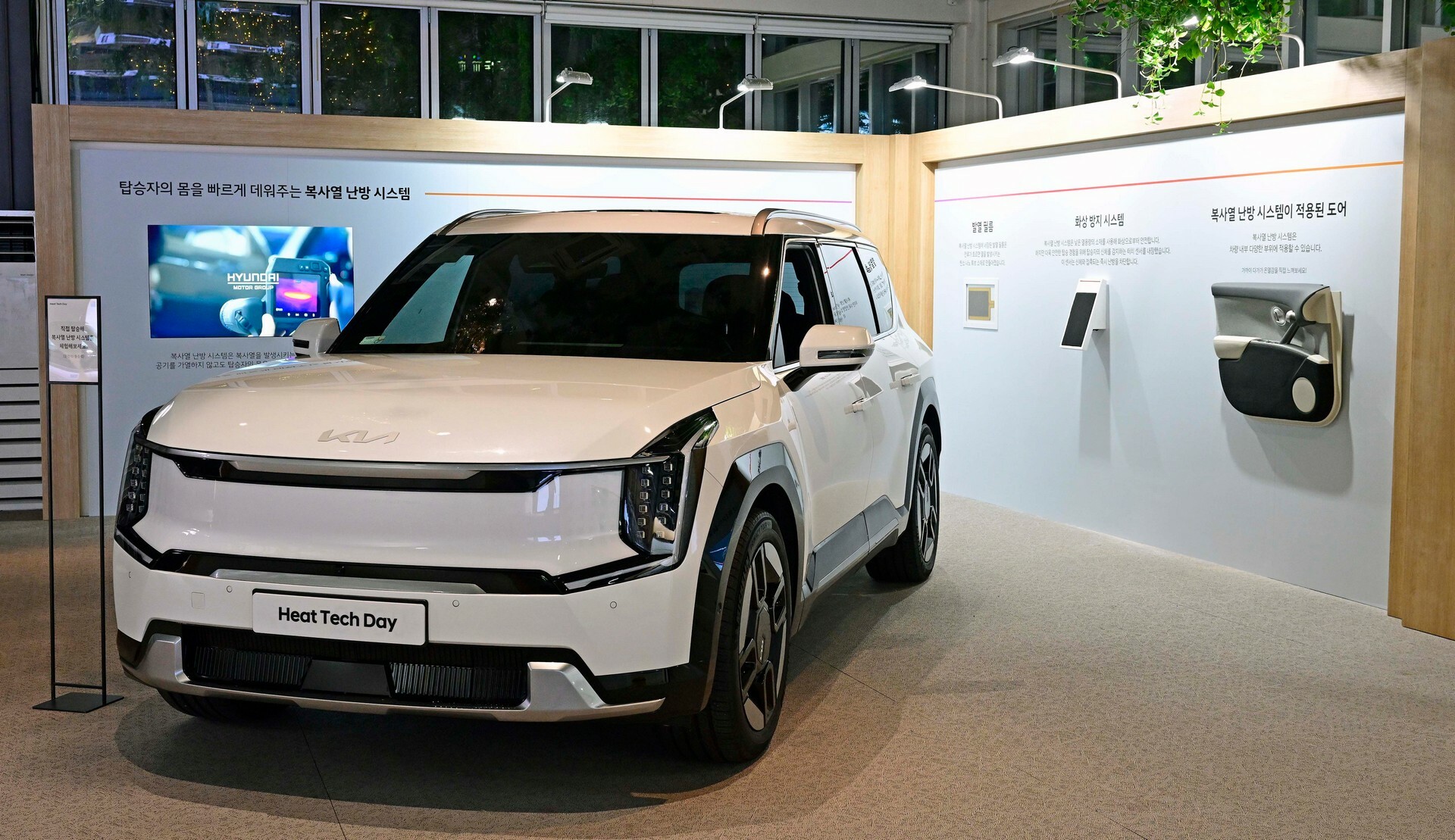- Hyundai is working on advanced radiant heating panels that could significantly increase the range of electric vehicles in cold climates.
- The latest panels feature improved technology and greater efficiency.
- The company envisions surrounding occupants with multiple heaters to keep them comfortable even in extremely cold conditions.
The Lexus RZ is pretty forgettable, but it’s notable for offering infrared heating panels. They’re located beneath the steering column and passenger side dashboard, and warm your legs when activated.
This has a number of benefits and Lexus officials told us it’s more efficient to heat occupants directly rather than the air inside the cabin. In particular, the company said “compared to a standard climate control system, energy consumption is reduced by around eight percent.”
More: The Lexus RZ 450e’s Radiant Knee Heater Is Cooler Than The Name Suggests
That brings us to the Hyundai Motor Group, which recently announced plans to embrace radiant heating. While Lexus was more focused on the comfort aspect, Hyundai is playing up the efficiency benefits as they noted “range anxiety is a global phenomenon” and “electric vehicles consume a lot of electricity for heating, so their energy consumption efficiency varies greatly depending on the external environment.”
As a result, they’re developing radiant heating systems that will keep occupants warm despite the interior having a relatively cool air temperature. This promises to keep occupants warm and comfortable, while also reducing overall energy consumption.
While Hyundai has been offering radiant heaters in some markets since 2019, it appears their use will spread in the future. Furthermore, the latest heaters are more advanced and feature a “film-type heating element using [a] carbon nanotube material that can provide thermal effects more effectively due to its wider heating area compared to the carbon fabric heating element used in the first-generation technology.”
More interestingly, Hyundai envisions radiant heaters would surround occupants to provide warmth from multiple sides. In particular, they installed heaters underneath the steering wheel as well as behind the trim on the door panels and center console. This wraparound approach meant that a set temperature could be reached within three minutes despite -4° F (-20° C) conditions.
The wraparound panels were applied to the Genesis Neolun concept and the company hinted these are “complete enough to be mass-produced in the near future.” That could prove to be a boon to EV customers in cold climates as Hyundai said heating energy consumption can be reduced by about 17%.











